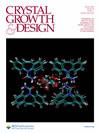Solvent-Dependent Zn(II) Supramolecular Isomers and [2 + 2] Photocycloaddition Reaction via an SCSC Transformation
IF 3.2
2区 化学
Q2 CHEMISTRY, MULTIDISCIPLINARY
引用次数: 0
Abstract
Each of the supramolecular isomerism and the solid-state [2 + 2] photocycloaddition has been developed as an independent research topic in crystal engineering. We herein report the solvent-dependent formations of the olefin-based supramolecular isomers (1 and 2) showing different photoreactivity. In the solvothermal reaction of Zn(NO3)2·6H2O, 1,2-bis(4-pyridyl)ethylene (bpe), and 1-adamantanecarboxylic acid (Hadc) in dimethylacetamide(DMA)/water, we obtained a zigzag-shaped coordination polymer of the type [Zn(bpe)(adc)2] (1). When dimethylformamide (DMF) was used instead of DMA, the railroad-shaped supramolecular isomer 2 was isolated. In 2, the dinuclear repeating units, Zn2(adc)4 as railroad ties, are dilinked by bpe ligands. Under ultraviolet (UV) irradiation, isomer 1 was photoinert due to the large separation between the olefin (C═C) bonds in the bpe ligands. In contrast, isomer 2 was photoreactive because the olefin bonds of the parallel bpe linker ligands are well aligned in a face-to-face mode and separated by a distance of 3.79 Å to undergo [2 + 2] photocycloaddition quantitatively via an single-crystal-to-single-crystal (SCSC) manner. All of these products exhibit yellow emission in the 385–388 nm region with different intensities depending on the local structures.依赖溶剂的 Zn(II) 超分子异构体和通过 SCSC 转化的 [2 + 2] 光环加成反应
超分子异构和固态[2 + 2]光环加成都是晶体工程学的独立研究课题。我们在此报告了烯烃基超分子异构体(1 和 2)随溶剂变化而形成的不同光活性。在 Zn(NO3)2-6H2O、1,2-双(4-吡啶基)乙烯(bpe)和 1-金刚烷羧酸(Hadc)在二甲基乙酰胺(DMA)/水中的溶解热反应中,我们得到了[Zn(bpe)(adc)2](1)这种人字形配位聚合物。当使用二甲基甲酰胺(DMF)代替 DMA 时,我们分离出了铁路形超分子异构体 2。在 2 中,Zn2(adc)4 作为铁路轨枕的双核重复单元被 bpe 配体稀释。在紫外线(UV)照射下,异构体 1 由于 bpe 配体中的烯烃(C═C)键之间存在较大的间距而呈光惰性。与此相反,异构体 2 具有光活性,因为平行的 bpe 连接配体的烯烃键以面对面的方式排列整齐,并且相距 3.79 Å,可以通过单晶对单晶(SCSC)的方式进行定量[2 + 2]光环加成。所有这些产物都在 385-388 纳米波段发出黄色光,其强度因局部结构而异。
本文章由计算机程序翻译,如有差异,请以英文原文为准。
求助全文
约1分钟内获得全文
求助全文
来源期刊

Crystal Growth & Design
化学-材料科学:综合
CiteScore
6.30
自引率
10.50%
发文量
650
审稿时长
1.9 months
期刊介绍:
The aim of Crystal Growth & Design is to stimulate crossfertilization of knowledge among scientists and engineers working in the fields of crystal growth, crystal engineering, and the industrial application of crystalline materials.
Crystal Growth & Design publishes theoretical and experimental studies of the physical, chemical, and biological phenomena and processes related to the design, growth, and application of crystalline materials. Synergistic approaches originating from different disciplines and technologies and integrating the fields of crystal growth, crystal engineering, intermolecular interactions, and industrial application are encouraged.
文献相关原料
| 公司名称 | 产品信息 | 采购帮参考价格 |
|---|
 求助内容:
求助内容: 应助结果提醒方式:
应助结果提醒方式:


